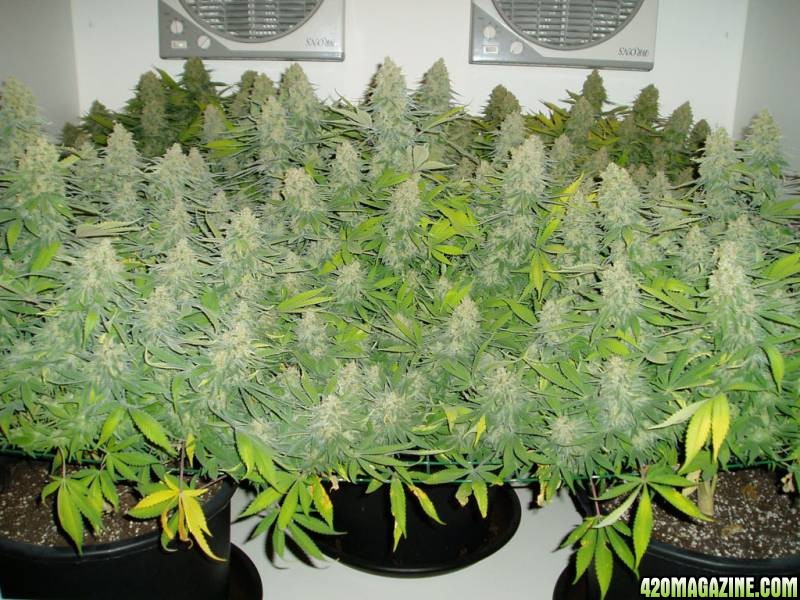old_skool
New Member
A questions to the guru's. I am wondering why the use of fluros during the veg period when a HPS system can be used for the entire grow?? I understand that some people use fluros because they don't have access or it is cost prohibitive.
My question is geared toward growers that have the access to a HPS system, and since reading <a href="https://www.nomercy.nl/forum/viewtopic.php?t=241">Atmosphere's grow</a> he stated: "This proves you don't need a veg. period . Plants over 40 inches tall are not suited for indoor growing because the light will never penetrate that far."
My understanding of the use of fluros during the veg period is to make them grow bigger root and height wise. But, doesn't this increase the grow time and if the same or not better can be accomplished with an HPS system on 12/12 why use fluros?
I know about the other spectrum's of light so I bought a 400W Horticultural HPS bulb that puts out 55,000 lumen's and "also provides 30% more "blue spectrum" Doesn't this cover all the spectrum's needed for a successful grow?
To explain I have never grown with fluorescent bulbs. 30 years ago it was all el natural lighting either indoors or out, so the use of fluorescent bulbs for veg bewilders me.
Thanks,
Old Skool
My question is geared toward growers that have the access to a HPS system, and since reading <a href="https://www.nomercy.nl/forum/viewtopic.php?t=241">Atmosphere's grow</a> he stated: "This proves you don't need a veg. period . Plants over 40 inches tall are not suited for indoor growing because the light will never penetrate that far."
My understanding of the use of fluros during the veg period is to make them grow bigger root and height wise. But, doesn't this increase the grow time and if the same or not better can be accomplished with an HPS system on 12/12 why use fluros?
I know about the other spectrum's of light so I bought a 400W Horticultural HPS bulb that puts out 55,000 lumen's and "also provides 30% more "blue spectrum" Doesn't this cover all the spectrum's needed for a successful grow?
To explain I have never grown with fluorescent bulbs. 30 years ago it was all el natural lighting either indoors or out, so the use of fluorescent bulbs for veg bewilders me.
Thanks,
Old Skool







